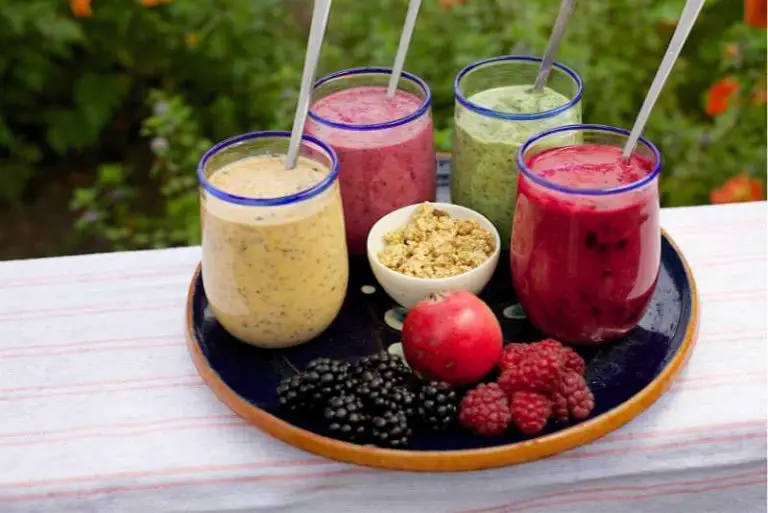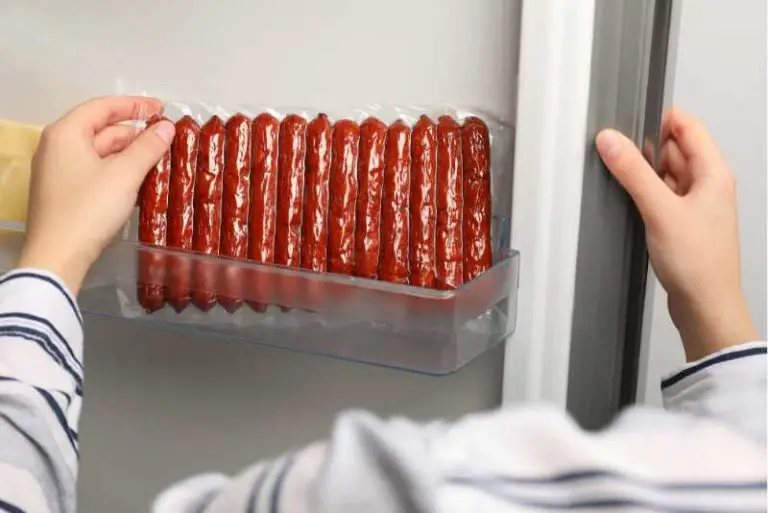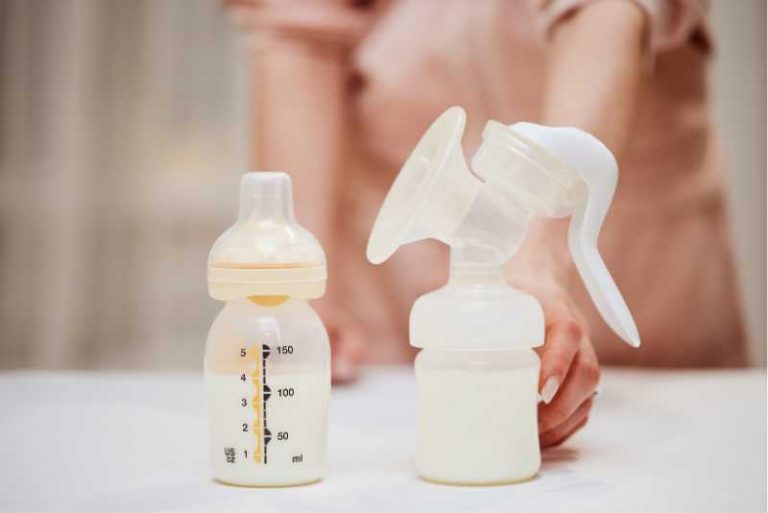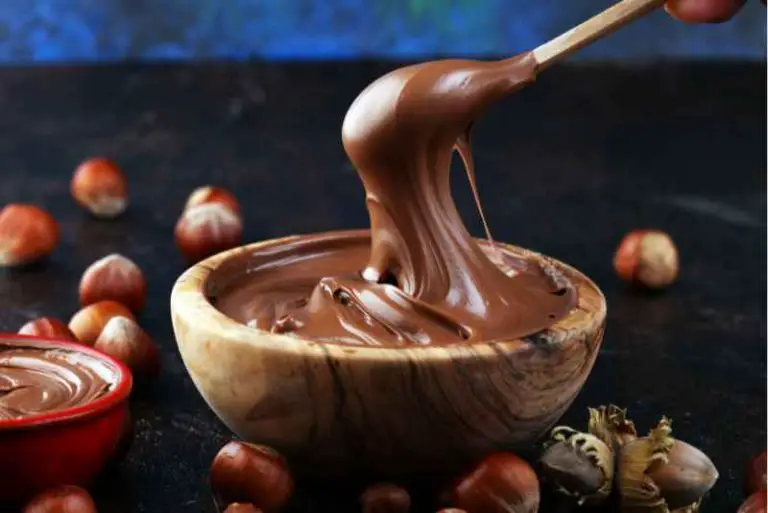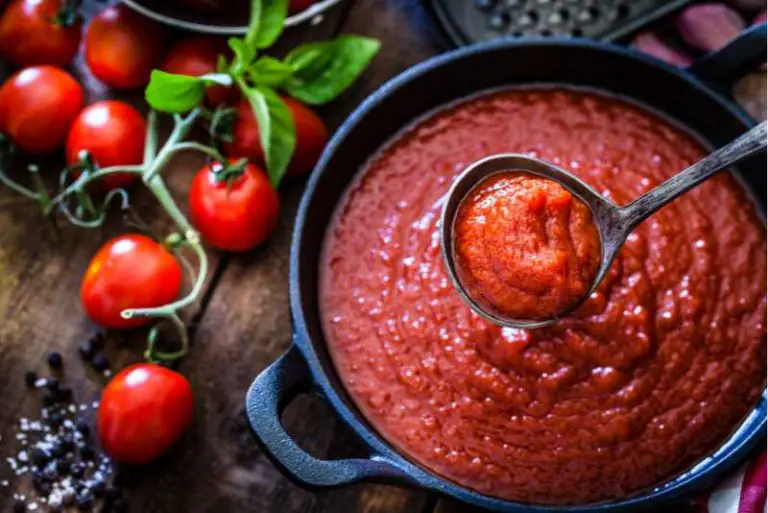How Long Does Vacuum Sealed Salmon Last In The Fridge?
Salmon is one of the most popular fishes on the market, mainly for its rich flavor, tender texture, and numerous health benefits. However, one common question that many people have is how long vacuum-sealed salmon can last in the fridge?
When properly vacuum-sealed and refrigerated, fresh salmon can typically last 3-4 days in the fridge. However, if the fish is not vacuum-packed then it will only last 1-2 days.
How Long Does Frozen Vacuum Sealed Salmon Last In The Fridge?
If you’ve purchased frozen vacuum-sealed salmon, you can store it in the freezer for up to 6-9 months. After thawing, the salmon will typically last the same as fresh salmon 3-4 days.
When thawing salmon in the refrigerator, it’s best to first remove the packaging and place the fish on a plate or in a container to catch any potential drips.
Allow the salmon to sit undisturbed in the fridge for 12 to 24 hours. Once fully thawed, your salmon will be ready to cook and enjoy, ensuring a delicious and safely prepared meal.
How Long Does Cooked Vacuum Sealed Salmon Last In The Fridge?
Once cooked, vacuum-sealed salmon can last in the refrigerator for up to 3 days. However, to maintain its quality and freshness, ensure that the cooked salmon is properly sealed in the bag before placing it in the fridge.
However, it’s important to make sure to maintain a consistent temperature between 32°F (0°C) and 40°F (4°C) in your fridge to prevent bacterial growth and spoilage.
How To Tell If Your Vacuum-Sealed Salmon Has Gone Bad?
It’s essential to determine whether your vacuum-sealed salmon has gone bad before consuming it to avoid potential food poisoning. So, to help you with this, here are some signs to look for when checking the freshness of vacuum-sealed salmon:
- Smell: Fresh salmon should have a mild, ocean-like scent. If the salmon emits a strong, unpleasant, or sour odor, it’s likely spoiled and should not be consumed.
- Texture: Fresh salmon should have a firm texture when touched. If the salmon feels slimy, sticky, or excessively soft, it’s a sign that the fish has gone bad.
- Appearance: Check for any visible signs of spoilage, such as discoloration, mold, or a dull appearance. Fresh salmon should have a vibrant color (ranging from pink to deep red) and a slightly moist, glossy surface.
- Taste: Although not recommended as the first step, if you’ve checked the smell, texture, and appearance and are still uncertain, you can taste a small portion of the salmon. If it tastes off, bitter, or sour, discard the fish immediately.
- Expiration date: Always take note of the expiration date on the packaging or consult with the supplier about the specific product’s shelf life. If the salmon is past its expiration date, it’s best to err on the side of caution and discard it.
When in doubt, it’s always better to err on the side of caution and dispose of the salmon if you suspect it has gone bad. Consuming spoiled fish can lead to foodborne illnesses and pose a risk to your health.
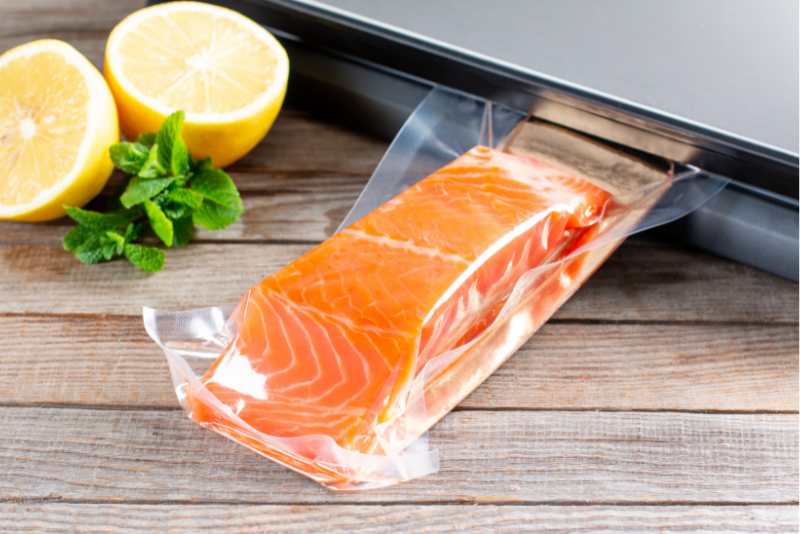
Factors That Can Effect The Freshness Of The Salmon
Several factors can influence how long vacuum-sealed salmon lasts in the fridge:
- Temperature: The ideal temperature for storing vacuum-sealed salmon is between 32°F (0°C) and 40°F (4°C). Any fluctuations in temperature can cause the fish to spoil more quickly.
- Quality: The freshness of the fish at the time of purchase plays a significant role in determining its shelf life. Always buy salmon from a reputable supplier and check for signs of freshness, such as bright-colored flesh, a firm texture, and a mild, fresh scent.
- Packaging: Ensure that the vacuum seal is intact and free of punctures or leaks. Any exposure to air can lead to faster spoilage.
Tips For Storing Vacuum-Sealed Salmon
To maximize the shelf life of vacuum-sealed salmon, follow these storage tips:
- Refrigerate promptly: After purchasing the salmon, place it in the refrigerator as soon as possible to maintain its freshness.
- Store in the coldest part of the fridge: To maintain an optimal temperature, store the vacuum-sealed salmon in the coldest part of your fridge, usually at the back of the lower shelves.
- Avoid temperature fluctuations: Try not to open the fridge door frequently, as this can cause temperature fluctuations that may affect the salmon’s quality.
- Don’t break the vacuum seal until ready to use: Keep the vacuum-sealed packaging intact until you’re ready to cook or consume the salmon. Breaking the seal exposes the fish to air, which can lead to faster spoilage.
- Thaw frozen salmon safely: If you’ve purchased frozen vacuum-sealed salmon, thaw it in the refrigerator for 24 hours or by placing it in a sealed plastic bag and submerging it in cold water. Avoid thawing at room temperature, as this can promote bacterial growth.
Can Vacuum Sealing Cause Botulism?
Yes, it’s entirely possible to get botulism from eating vacuum-sealed salmon. However, this is very unlikely, and there are steps you can take to prevent it.
Botulism is a rare but serious illness caused by the bacteria Clostridium botulinum, which produces a dangerous toxin. Vacuum sealing creates an anaerobic (oxygen-free) environment, which is ideal for the growth of these bacteria.
You can also take steps to prevent botulism when vacuum-sealing salmon…
- Use fresh, high-quality ingredients and ensure they are properly cleaned.
- Follow proper canning or cooking methods to kill any existing bacteria before vacuum sealing.
- Store vacuum-sealed food in the refrigerator or freezer to slow down bacterial growth.
- Consume vacuum-sealed food within a reasonable time frame. Check the guidelines for specific food items to determine their safe storage duration.
- Be cautious when vacuum sealing low-acid foods (e.g., meats, poultry, and fish), as they have a higher risk of botulism.
If you take these precautions, getting botulism from vacuum sealed salmon is very low. However, if you are still concerned, you can cook the salmon before sealing it. This will kill the bacterium and make it safe to eat.
Conclusion
S when your fish is properly stored, it typically lasts up to 3 days in the fridge. But, always pay attention to the storage conditions and the quality of the fish to ensure that you’re enjoying the freshest and most delicious salmon possible.

